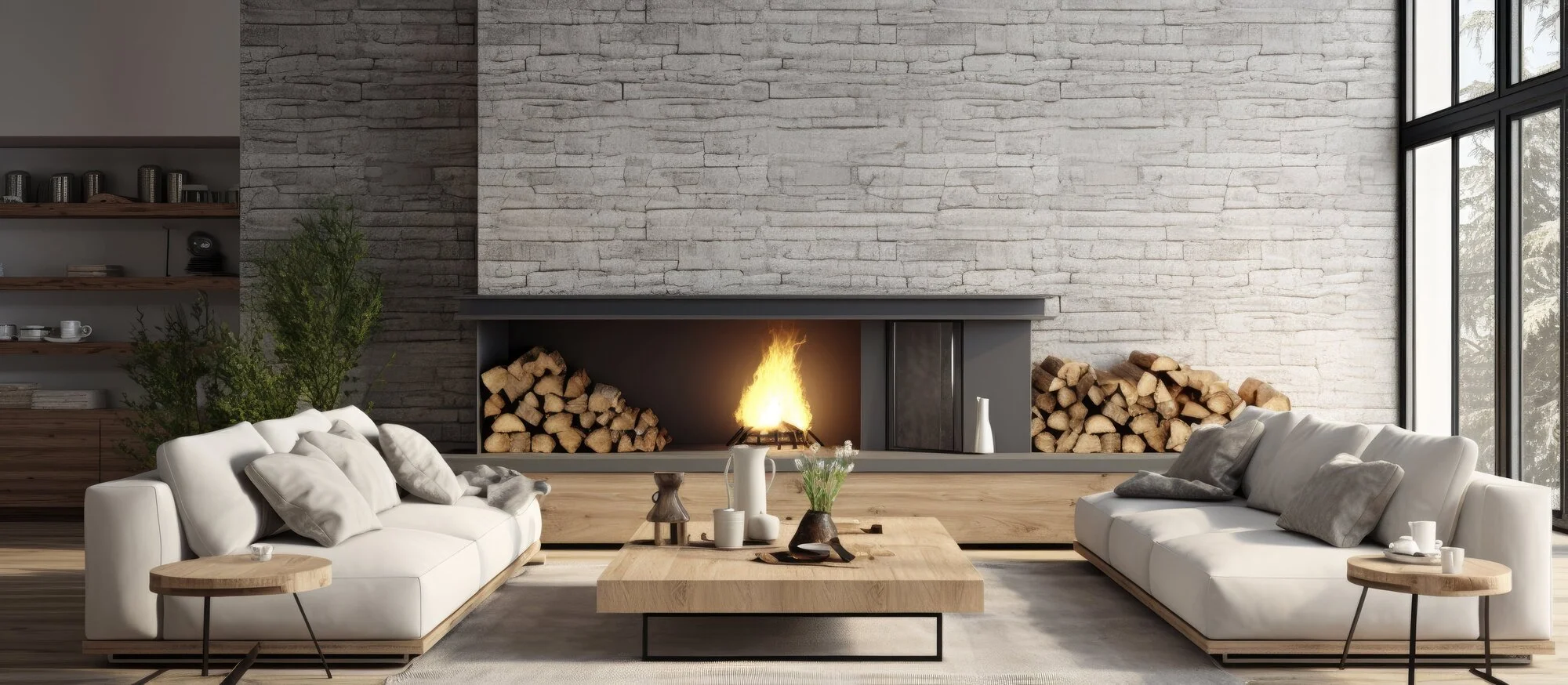Are you looking to turn your old fireplace into a modern and convenient heating feature in your home? A gas fireplace insert provides the warmth and charm you want but without the mess, draftiness, and tedious maintenance of a traditional wood-burning fireplace.
If you’ve decided to install a gas insert fireplace, here is a complete guide that provides a comprehensive overview of the steps from preparation to final checks.
Key Takeaways:
- Installing a gas fireplace insert can transform an inefficient, open fireplace into a valuable heating element of your home.
- The installation process includes placing the insert, connecting the gas and electrical components, testing, and placing the final touches for a personalized fireplace insert.
Table of Contents
What is A Gas Fireplace Insert?
A gas fireplace insert is an efficient, clean-burning source of heat that fits into the existing structure of your home’s fireplace. They are designed to burn natural gas or propane and often come with realistic-looking logs, embers, and sometimes flames that closely mimic a traditional fire.
How To Install A Gas Fireplace Insert
Flipping a switch and having gorgeous flames provide heat and ambiance on a cold day is the perfect living you may have been searching for. But how do you install a gas fireplace insert, especially if you want to do it yourself?
This step-by-step guide will help you to install the fireplace insert quickly and efficiently. It can also prove helpful if you’re looking to replace a gas fireplace insert.
Assess Your Existing Fireplace and Chimney
Before installing a gas fireplace insert, it’s important to evaluate your existing setup to ensure compatibility and safety:
- Dimensions
Measure the height, width, and depth of your existing fireplace. This will help you choose an insert that fits perfectly.
- Chimney Inspection
Inspect your chimney for any blockages, damages, or leaks. Since the gas insert will utilize the chimney for venting, it must be in good condition. We recommend working with an expert for a professional inspection.
- Gas Lines
Determine if you already have gas lines installed or if new lines will need to be run. This step might also require a professional assessment.
Choosing Your Gas Fireplace Insert
Selecting the right insert involves several considerations:
- Size and Fit
Based on your fireplace measurements, select an insert that fits snugly and meets the safe distance required away from combustibles.
- Heat Output
Consider the size of the area you want to heat and choose an insert with an appropriate BTU (British Thermal Units) output.
- Style and Features
Choose a design that matches your home decor. Additionally, look for features like adjustable flame control, remote control operation, and thermostat integration.
Necessary Tools and Materials
Prepare the following tools and materials for the installation:
- Screwdrivers
- Wrench set
- Drill
- Level
- Ladder
- Tape measure
- Pipe wrench
- Flexible gas supply line
- Fireplace insert kit
- Venting pipe specifically designed for gas appliances
- High-temperature sealant and caulking gun
- Personal protective clothing, work gloves, and safety glasses
Preparing for Installation
- Permits and Codes
Check with your local building authority to obtain necessary permits and ensure your installation complies with local building codes, especially concerning gas appliances and venting requirements.
- Fireplace Cleaning
Clean the existing fireplace thoroughly, removing any debris, soot, or ashes.
- Chimney Preparation
Ensure the chimney is clean and clear of obstructions. You may need to hire a professional to clean and inspect it.
Installation
- Venting Installation
Install a venting kit that is compatible with your gas insert. Run the vent from the insert up through the existing chimney. Use a high-temperature sealant to secure all connections.
- Gas Insert Placement:
Carefully slide the gas insert into the cleaned fireplace opening, making sure it is level. Secure the insert into place based on the manufacturer’s instructions, typically involving screws or brackets.
- Connecting Gas and Electrical Components:
Connect the gas supply line to the insert using a flexible hose. Ensure all connections are tight and leak-free using the appropriate fittings and a pipe wrench. If your insert has electrical components like a fan or remote control, connect them to a nearby power source as per the manufacturer’s instructions.
- Testing the Insert
Perform a leak test on all gas connections using a soapy water solution. Watch for bubbles that indicate a leak. Ignite the insert and observe the flame. Adjustments might be necessary to ensure the flame burns cleanly and efficiently. We highly recommend working with a safety inspector to guarantee your safety.
Final Touches
- Install Surround and Trim
Attach any surround or trim pieces that come with the insert to give it a finished look that integrates with your existing décor.
- Seal the Edges
Use high-temperature caulking around the edges of the insert to improve efficiency and prevent drafts.
Contact Luxury Heating for Quality Fireplace Installation Services
For quality fireplace installation services, call Luxury Heating & Air. With over 20 years in the heating and cooling service industry, you can depend on us to install your fireplace insert according to the manufacturer’s specifications to guarantee optimum functionality. Contact us today for a free service estimate.

